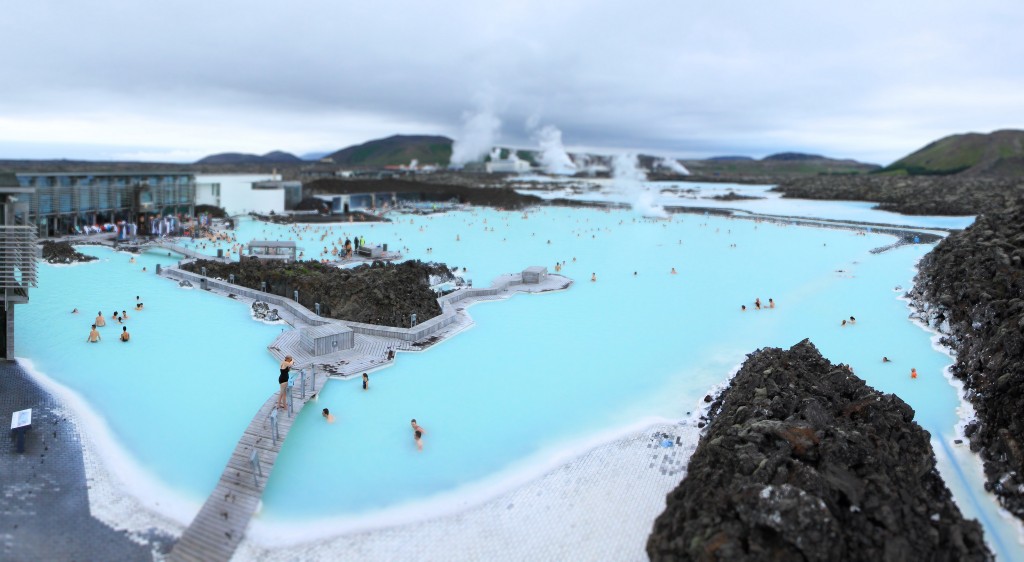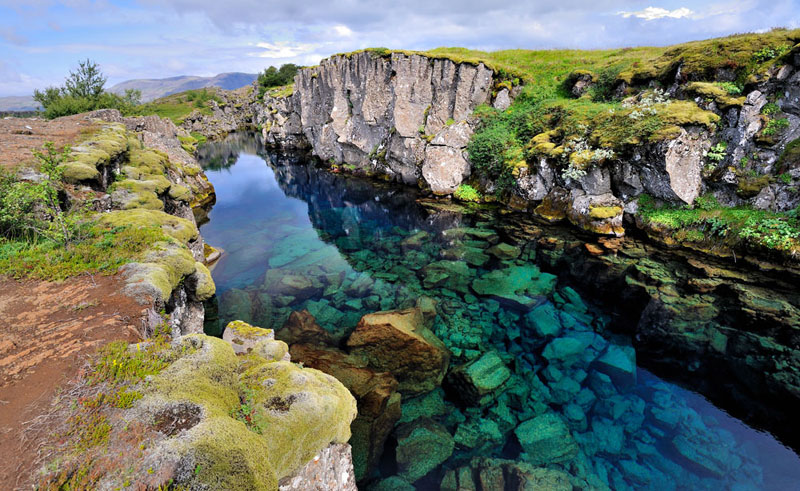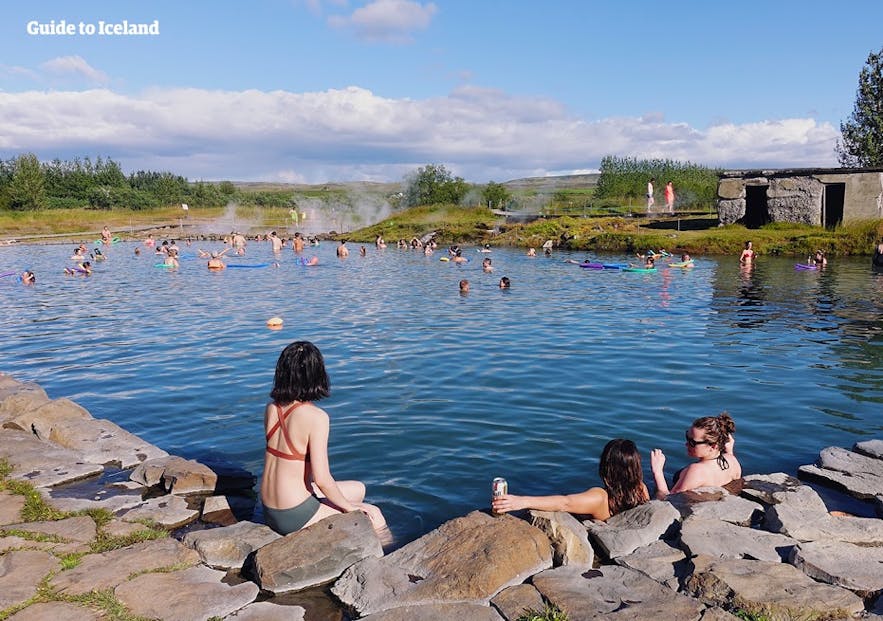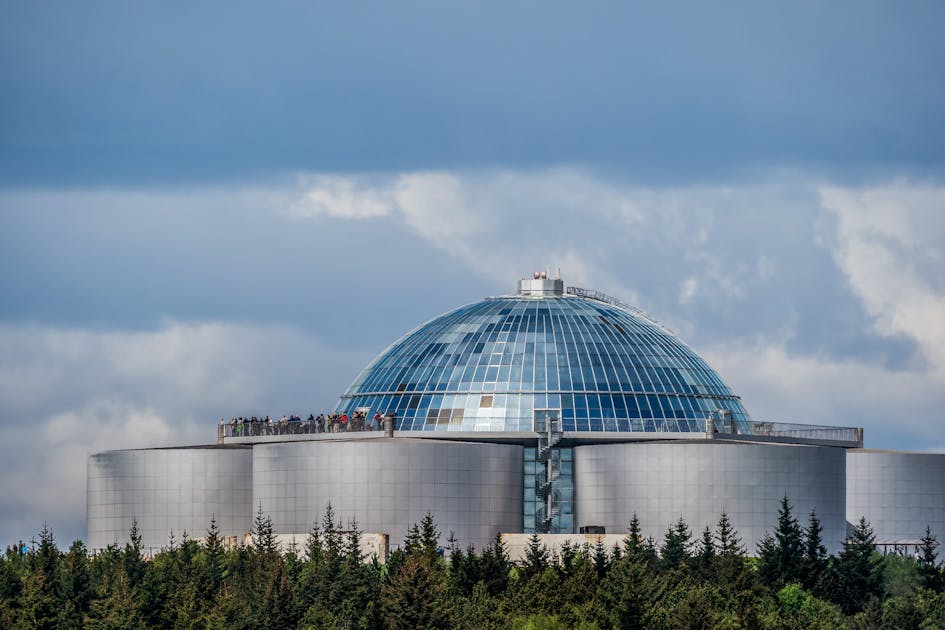Reykjavik & West Iceland – July 31-Aug 2
Day 6 (continued)
THE GOLDEN CIRCLE
This is the most popular tourist route in Iceland covering a vast area of geological and historical attractions.
THINGVELLIR NATIONAL PARK
This is Iceland’s most important historical site – the Vikings established the world’s first democratic parliament, the Althing, here in 930. It is also a superb natural setting on Lake Thingvellin and the edge of the rift caused by the separating North American and Eurasian tectonic plates – the small river that flows through feeds into Lake Thingvellin, at 84 sq km and 114m deep, the biggest natural lake in Iceland. The majority of the lake’s inflow is underground. Tingvellir was made a Unesco World Heritage Site in 2006 (Viking Monuments of Iceland).
The parliament enacted new laws and ruled on legal disputes. As vengeance was common before the parliament was formed, this introduced a much fairer way to deal with disputes. If a problem could not be resolved at the local level, they were brought here. A final court of appeal was available as the final arbitrator. The working body of the parliament was the law council composed of the chieftain (elected for 3-year terms in each district) and two of his councilors from each of the 12 districts of Iceland. The Law Speaker was elected from that body to preside over the council, pronounced laws and verdicts that could be appealed. The annual assembly was usually held over a week in June. Booths were available as housing during the assembly.
King Olaf of Norway sent timber to build the original 1015 church.
The area subsided 4m over time causing flooding. Then an earthquake in 1798 caused two metres more and the Althing assembled here for the last time then. Councils were held in Reykjavik after 1845.
There is virtually nothing remaining of the original structures. The visitor centre has a multimedia display explaining the history (ISK 2000) but the rest of the site is free. Viewpoints and paths show where things were: Lögburg (the podium for the Althing) and remnants of booths. The 1859 church and farm serve as the present prime minister’s summer residence. Natural features include the several fissures at the separation points of the tectonic plates containing water, the Oxará River that flows through the site, and majestic cliffs that form the back wall of the entire sited.
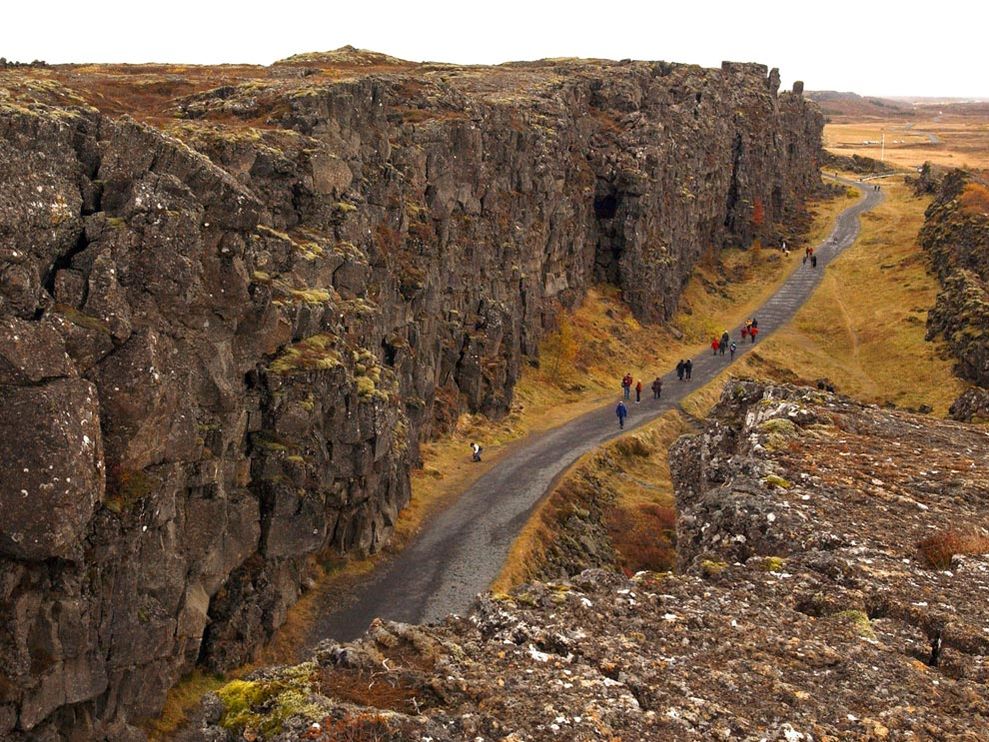
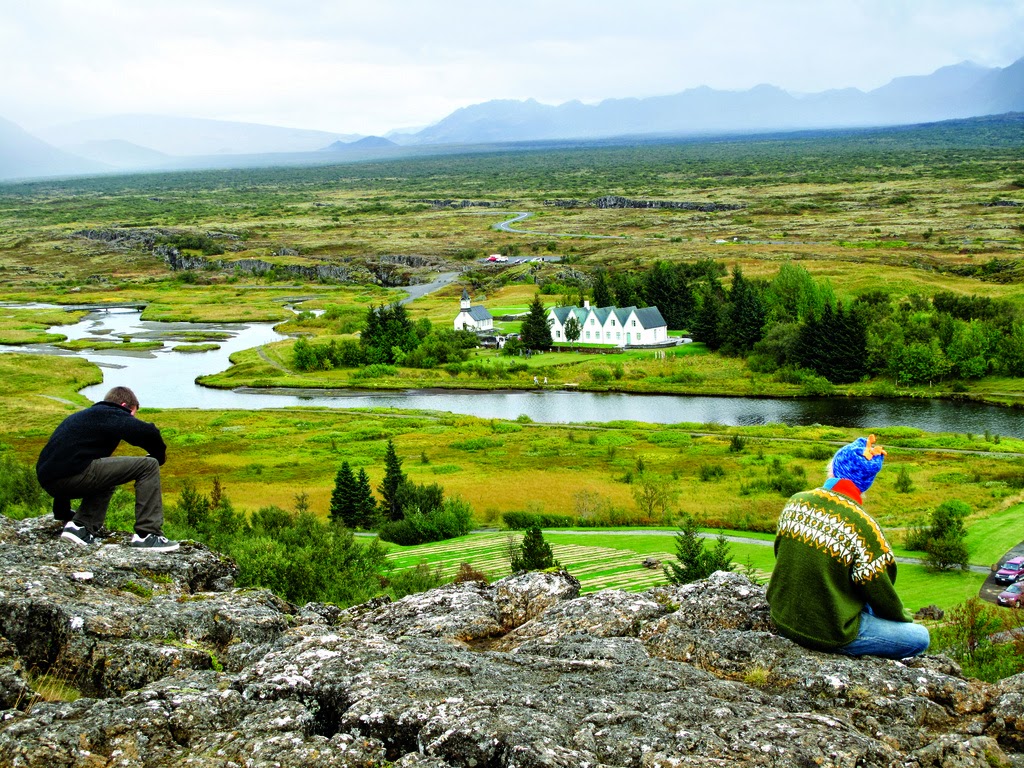
GEYSIR GEOTHERMAL AREA. All spouting hot springs are named after Geysir. Tourists clogged the Great Geysir in the 1950s with rocks and rubbish, thrown in an attempt to set it off, but since earthquakes in 2000, it has begun to erupt again, though infrequently. Luckily, the world’s most reliable geyser, Strokkur is right next door and waits are rarely longer than 5 minutes to see the dramatic 15-30m plume of water lasting only a few seconds. The area has fumaroles, mud pots, and hot pools. Walk up to a high viewpoint above the whole spectacle. Crowds are immense.
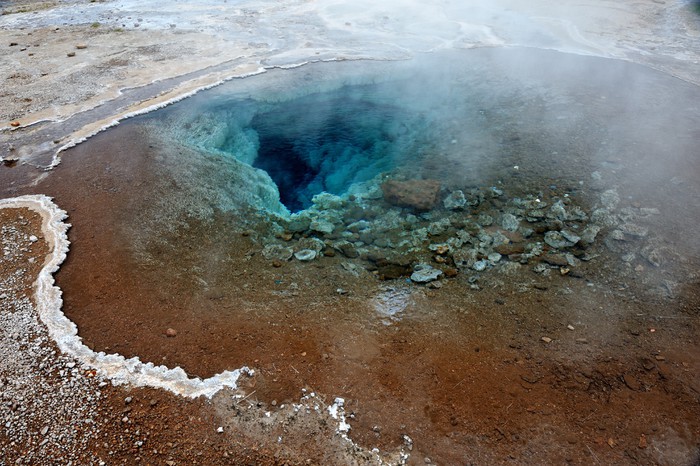

GULLFOSS (Golden Waterfall). Iceland’s most famous waterfall, it is a spectacular double cascade dropping 32m to produce walls of spray before thundering down a rocky ravine. Crowds are huge on the several viewing platforms on the edge of the falls.
Keriõ. This volcanic crater hosts floating music concerts. Near here I picked up 3 French hitchhikers who had been walking for 3 hours from Geysir planning on going to the Secret
Lagoon.
Flúöđir and the Secret Lagoon. Hardly a secret, this commercial pool looks natural but is a 1m deep rectangle dugout, sitting on the edge of two 200° hot springs. The temperature varies from 38° to 41° depending on how close you are to the springs. ISK 2800, half-price if over 67
Skálholt Cathedral. From 1056 to 1786, it was one of Iceland’s two episcopal sees, making it a cultural and political centre.. Iceland’s first official school was founded here in 1056 to educate clergy. Throughout the Middle Ages, there was the bishop’s office, cathedral, school, farming, a smithy, and while Catholicism lasted a monastery. It continued as the episcopal see after the Reformation to Lutheranism in 1550 when the last Catholic bishop was executed here along with his two sons. Although no longer an Episcopal See, it is still the cathedral (along with Hólar) of the Church of Iceland. In 1992, it was reinstituted and now serves as the education centre of the Church of Iceland.
Visitors can stay here in dormitories, single rooms, and cottages. Many cultural events are held here – most notably the Summer Concerts program in July with classical musicians, and choirs.
The current cathedral is relatively large – 30m from the door to an apse in the new cathedral built from 1956 to 1963. The extensive stained glass windows were a gift from the Danes.
Day 7
REYKJAVIK (pop 205,000)
I stayed on the street for two nights in front of the Kex Hostel where I mooched internet.
Reykjavik City Card. This offers free admission to most of Reykjavik’s museums (and reduced rates to the three private museums), free admission to Reykjavik’s municipal swimming thermal pools, free travel on the city’s buses and the ferry to Videy and discounts on some tours, shops, and entertainment. Buy at the tourist information office at the north end of Lake Tjörnn. IKA 3800 for one day, 4800 for two days. I activated at 10 and with a well-planned driving route was able to see all the following museums probably getting three times their value.
Unknown Official Sculpture. Near the tourist information is this black stone sculpture of a man from the waist down carrying a suitcase and a large block of stone for his trunk and head.
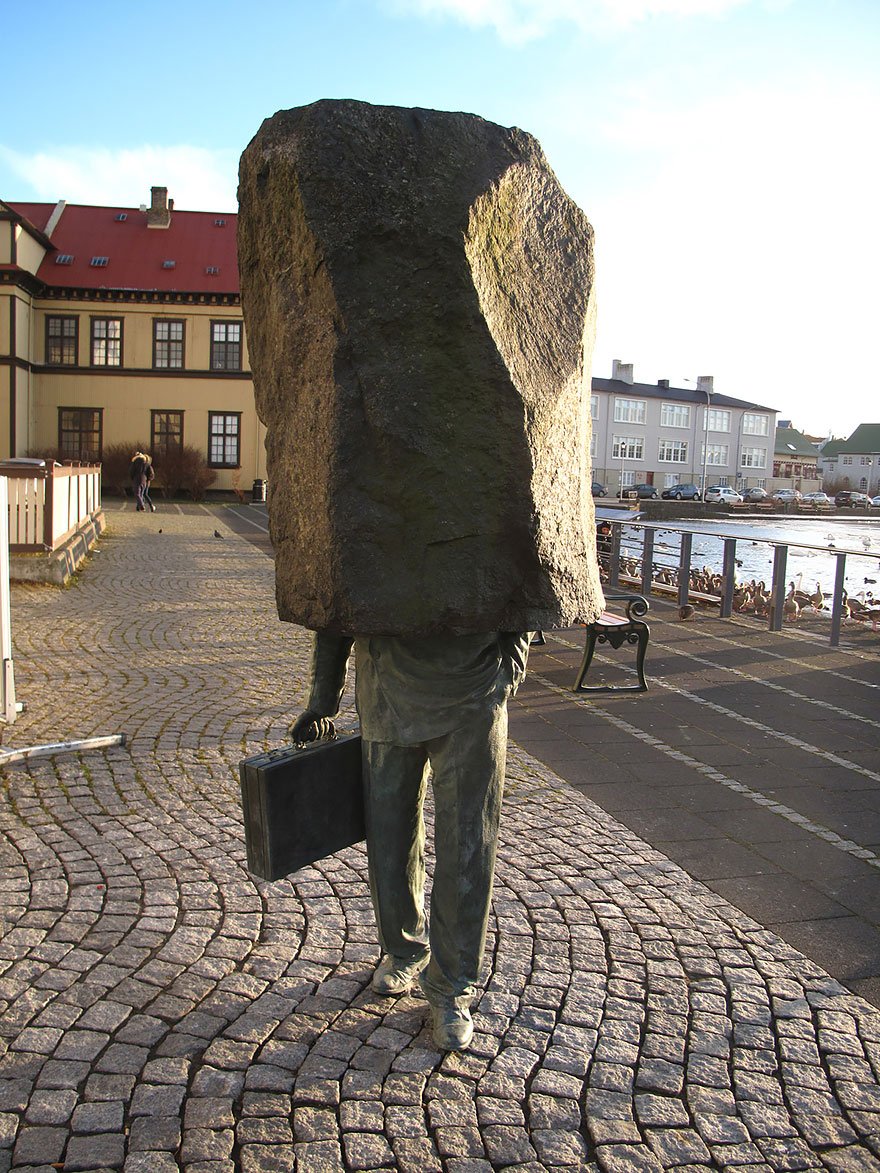
National Gallery of Iceland. Exhibits include 19th and 20th-century Icelandic artists and a darkened room containing the Acts of Union, the world’s oldest recorded census, and the earliest written sagas. ISK 1600
National Museum. This is the best museum in Iceland exhibiting a wonderful collection of archaeology and artifacts. The saddles and saddle blankets were especially interesting. ISK 2000
Hallgrimskirkja. Reykjavik’s immense white-concrete cathedral dominates the city’s skyline and is visible 20 km away. The 74.5m tower is constructed of ascending hexagonal columns. It is possible to take an elevator to the top for the best views in the city. The Lutheran church’s interior is quite plain with plain glass windows and the main standout, the 5275-pipe organ.



Liefur Eriksson statue. This statue in front of the church was a 1930 gift from the USA on the 1000th anniversary of the Althing (parliament).

Reykavik Art Museum. This has three sites:
Kjarvalsstađir. Showing modern art, the exhibit was also on “No Man’s Land” but showed primarily paintings of Icelandic landscapes since the 1800s.
Hafnarhis. Downtown, this site shows rotating exhibits of contemporary art. This exhibit was entitled “No Man’s Land” and showed many photographs of Iceland’s highland areas. Interesting were the 30 or so photos of vehicles up to their windows in water as they attempted to cross the interior’s rivers.
Asmundarsafn. This site concentrates on sculpture. I didn’t go here.
Icelandic Phallological Museum. One of the world’s most informative and unusual museums, it was started by a school teacher in 1997 after 23 years of collecting. This unique museum houses a huge collection of penises from at least 380 (and growing) animals representing all Icelandic land and sea mammals and a foreign section with 40 examples. The baculum or penis bone is absent in humans, ungulates, marsupials, hyenas, and cetaceans. From the largest (blue whale at 8-10 feet, ejaculate of 20 litres and 68kg testicles) to the smallest, it is very well done and a fascinating place to visit. Also included are 350 artistic oddments and practical instruments including canes made from bull penises and an array of ceramics, art and toys including penises of trolls and elves. ISK 1500 with 10% discount with card.
Arbæjarsafn. This open-air museum has old houses, a church, and farm buildings moved here from all over Iceland. ISK 1650
Centre of Culture and Fine Art – Hofnanfijorđur. A pharmacist and his wife bequeathed their lovely house and art collection in 1988. Local artists from the main exhibits. Free
Icelandic Institute of Natural History. In the NM “modern architecture series’, I came to see the building and it turned out the museum was closed for the summer holidays. The concrete-clad building has an etched glass façade.

Listafa Kopavogs – Gerdarsafn Art Gallery – Lopavagur. This Icelandic artist (1928-1969) lived in Florence and Paris producing a wide range of sculptures: geometrics, stone and clay heads, and stained glass. This was the first gallery in Iceland devoted to a single artist and opened in 1994. ISK 1500
Goukurina. This nightclub has stand-up comedy Monday night, Karaoke Tuesday night, and live bands several nights of the week, some free. It is a small place with some booths and tables, an open smoking deck, and a very good vegan restaurant.
Saga Museum. This museum brings Icelandic history to life using full-scale silicon figures in historically accurate clothing and realistic settings. Meet some of Iceland’s most famous heroes and villains in their defining moments. Some scenes portrayed include the Viking settlement of 874, Leif the Lucky’s discovery of America, the founding of the world’s first parliament and epic clan feuds. A multi-language soundtrack with thudding axes and hair-raising screams adds realism. A video shows how the models were made using local residents of Reykjavik. ISK 2200 with a 10% reduction with a card.
Whales of Iceland. 23 life-size models of every whale found in Icelandic waters throughout Icelandic natural history are shown. Accompanying these are interactive displays and videos, whale sounds, and underwater ambient lighting. A virtual reality experience is very popular. Follow the movements of real individual satellite-tracked humpback whales as they travel and migrate. It is also possible to combine the ticket with real whale-watching tours in Faxafloi Bay. ISK 2900 with 30% reduction with the card.
Harpa. In the NM “modern architecture” series, this culture and convention is a fantastic architectural wonder with the facade of glass in metal frames forming the structure (the ones in front are hexagonal-like natural basalt columns) – 700 pieces in 70 different sizes give it a “stained glass” appearance; the glass also reflects different colours of light. There are 4 concert halls with Eldborg as the showcase facility – sound is carefully adjusted using adjustable doors, a 45-ton canopy that can be raised and lowered, and banners; it has 3 balconies. The five-story foyer has a ceiling of glass cubes.
Watch a fascinating video on the construction using 300 Chinese workers. The entire front had to be replaced as the metal frames were defective.
Day 8
I worked till well after midnight on my website at Kex Hostel, woke up late, and then went to Laugardalur and Perlan on my way to the Blue Lagoon, and Keflavik with the ultimate destination of Hella on the south coast to catch the bus to do the Langavegurinn Trek.
Laugardalur. 4 km east of the city, was once the city’s hot water supply but now is a huge swimming complex fed by a geothermal spring, spa, café, skating rink, botanical gardens, sporting and concert arenas. I had a lovely soak, and a much overdue shower and shave. ISK 980 Free with card
Perlan. The mirrored dome of Perlan covers huge geothermal water tanks on Oskjuhiđ hill about 2kms from the city centre. The wrap-around viewing deck gives a tremendous 360° panorama of Reykjavik and the mountains. Bring binoculars.
There is a museum here – The Wonders of Iceland ISK 1950 not included in the Reykjavik Card. ISK 440 to access the panoramic 360° deck. There are panoramic photos to identify most sites and exhibits of different rocks from all over the country. Trails can be walked.

KEFLAVIK. This city is about 48 km east of Reykjavik and the site of Iceland’s International Airport.
Viking Sword. This 7m high granite sculpture is a replica of a Viking sword sitting on a roundabout on the way to the Viking Museum.

Viking Museum. In an ultra-modern building on the water west of Kevlavik, it has the Viking ship Islendingur that sailed to North America for the 1000-year celebration of Leifur Eriksson’s discovery, Vikings of the North Atlantic tells the story of Viking expansion to the coast of North America’s (in conjunction with the Smithsonian Institution of the USA), Settlement of Iceland with archaeology, Fate of Gods on mythology and Iceland’s Saga Trails. ISK 1500 with concession if over 67.
Icelandic Museum of Rock ‘n Roll. A modern building in the city, it has a good history of popular music in Iceland from 1835 to 2017 with an emphasis on Iceland’s role in rock & roll. The exhibits use texts, photographs, video, memorabilia, video projectors, and tablet computers. ISK 2000
Blue Lagoon. Geothermal energy was discovered here in 1971 and changing facilities built from 1976-87, moved to the present site in the 800-year-old Illauraun Lava field in 1999 and expanded twice in 2007 and 2014.
Tickets must be booked online (www. bluelagoon.com) to get a specific time. When I came at 4 pm, the first available spot was at 10 pm. There are three levels of tickets starting at €56 and rising to for the spa. All include a face mask and a towel.
It is a very natural-looking pool with wood boardwalks and many bridges over the milky blue water. It is reputably healing because of the silica, algae, and minerals in the water and there are psoriasis clinics here. In the gift shop, one face mask was 9900.
